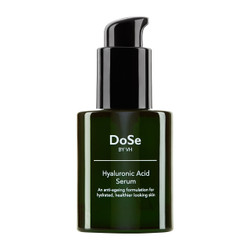
What Does Central Heating Do To Your Skin?
With the turn in temperature comes a dial-up of central heating in our workplaces, homes and social settings. As cosy as it feels, it’s not doing our skin any favours, with increased dehydration and dryness on the horizon.
But instead of simply enduring lacklustre skin, clinical aesthetician and co-founder of Mortar & Milk Pamela Marshall along with consultant dermatologist Dr Justine Kluk, reveal that there are preventative measures you can take, as well as the ingredients to prioritise in your routine to help ward off the effects of central heating amidst a winter chill.
What are the effects of central heating on our skin?
As Marshall explains, central heating, much like air conditioning in the summer, draws moisture from the skin which causes the outer stratum corneum to become dry and irritated. “The change from central heating to being out in the cold, going from work to home, will also affect our capillary network, causing the capillaries to become dilated.” Dry skin can then exacerbate acne, rosacea and eczema, she adds.
While increased dryness is particularly prominent across our lips and hands, keep a close eye on your cheeks as according to Marshall, the apples of our cheeks and nose tend to become more sensitised and flushed, and the skin often becomes dry and irritated too.
What preventative steps can you take to keep help avoid irritation?
While we’re all well-versed in the age solution to maintaining hydration levels by drinking water, you can also take extra measures to ensure skin health throughout the temperamental temperatures inside and outside.
In environments like your home, where you can control the central heating, Dr Kluk recommends using a timer so your heating comes on for a couple of hours in the evening and switches off again until morning. Not only will this help with your bills, but it won’t aggravate your skin with excessive heat. If you’re in a particularly cold place and prefer to keep your heating on overnight, turn the thermostat down and aim for a temperature around 20 degrees Celsius, says Dr Kluk to minimise its impact on the skin.
“Avoid marathon sessions in the bath or shower and keep the water lukewarm,” says Dr Kluk, who advises something as simple as trapping humidity in the bathroom while you wash by keeping the door shut. To minimise the loss of moisture from your skin, pat your face and body dry with a soft towel and apply moisturiser while it’s still a little damp.
It’s also important to steer clear of known irritants in skin care products; fragrance being one of the worst offenders. Stick to unscented shower gels, and avoid foaming agents such as sodium lauryl sulphate (SLS) in your products too. Dr Kluk recommends an emollient soap as a substitute instead.
What ingredients should you introduce to your skincare?
As for the steps to take within your skincare routine, there are a handful of ingredients that will aid recovery of damage done by central heating and increase hydration levels.
Firstly, polyhydroxy acids (PHA’s) are the best at deeply hydrating the skin beyond the stratum corneum, as well as reducing inflammation says Marshall, who makes sure her patients in her clinic use it topically all year round too.
“Look to other known humectants too, such as glycerin, urea, lactic acid and hyaluronic acid,” says Dr Kluk, which will attract water to your skin and help boost hydration. “Occlusive ingredients such as lanolin or petrolatum will also create a seal to reduce transepidermal water loss,” she adds, commonly found in lip balms and will help keep dry, chapped lips at bay.
Don’t forget to consider your diet too. According to Marshall, taking omegas and essential fatty acids are essential as our inner skin is both hydrophilic and lipophilic, and needs water hydration as much as lipid hydration. And of course, continue to keep drinking water regularly.
DISCLAIMER: The views, opinions and information expressed in this article and on Victoriahealth.com Ltd are those of the author(s) in an editorial context. Victoriahealth.com Ltd cannot be held responsible for any errors or for any consequences arising from the use of the information contained in this editorial or anywhere else on the site. Every effort is made by the editorial and content team to see that no inaccurate or misleading information, opinion or statement appear, nor replace or constitute endorsement from medical bodies or trials unless specified. Victoriahealth.com Ltd accept no liability for the consequences of any inaccurate or misleading data, information, opinion or statement. Information on Victoriahealth.com Ltd and in the editorials is provided for informational purposes only and is not intended as a substitute for the advice provided by your physician or other healthcare professional. You should not use the information on this website or in the editorials for diagnosing or treating a health concern or disease, or for the replacement of prescription medication or other treatment.





